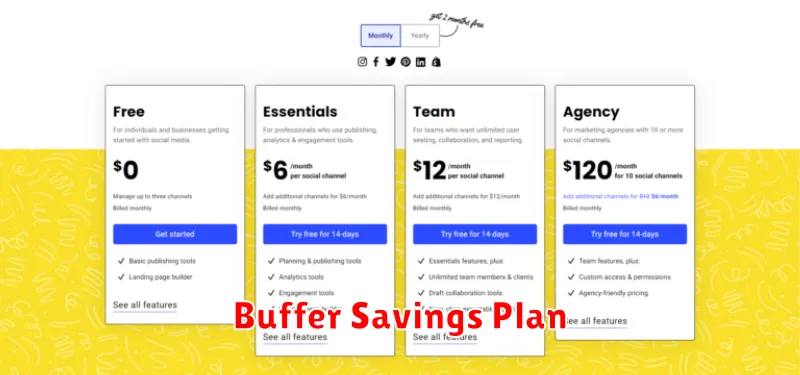Feeling financially insecure? Learn how to build a financial buffer without sacrificing your lifestyle. This guide provides practical strategies for creating a financial safety net, covering topics like budgeting, saving, and debt management. Discover easy-to-implement tips that will help you accumulate emergency funds and achieve long-term financial security without feeling deprived. Build a stronger financial future today!
What Is a Financial Buffer and Why It Matters
A financial buffer, also known as an emergency fund, is a readily accessible pool of money set aside to cover unexpected expenses or income disruptions. It acts as a safety net, protecting you from financial hardship during unforeseen circumstances.
The importance of a financial buffer cannot be overstated. It provides financial security, allowing you to handle emergencies like medical bills, car repairs, or job loss without incurring debt or drastically altering your lifestyle. Having this cushion reduces stress and provides peace of mind, knowing you are prepared for life’s inevitable surprises. A robust buffer also allows for more financial flexibility, enabling you to seize opportunities that might otherwise be missed due to financial constraints.
Building a financial buffer is a crucial step towards long-term financial well-being. It provides a foundation for achieving other financial goals, such as saving for retirement or purchasing a home, by mitigating the risk of setbacks that could derail those plans. Essentially, a financial buffer is an investment in your future financial stability and overall security.
Start with a Small Weekly Contribution
Building a financial buffer doesn’t require drastic lifestyle changes. Begin with a small, manageable weekly contribution to a savings account or investment vehicle. Even $10-$20 per week adds up significantly over time. The key is consistency.
This approach minimizes the feeling of deprivation because the amount is easily integrated into your existing budget. You may not notice the difference in your spending, but you will see a growing financial safety net.
Start small, track your progress, and gradually increase your contributions as you become more comfortable and your financial situation improves. This gradual approach fosters positive financial habits without overwhelming you.
Remember, the goal is consistency, not immediate large sums. Small, regular contributions are far more effective than sporadic large deposits in building a substantial financial buffer.
Cut One Minor Expense and Redirect It

Building a financial buffer doesn’t require drastic lifestyle changes. Start by identifying one minor, recurring expense you can comfortably reduce or eliminate. This could be anything from daily coffee shop purchases to a subscription service you rarely use.
Calculate the savings. Let’s say you cut $50 a month. That’s $600 a year directly added to your buffer. Even small reductions accumulate significantly over time.
Redirect those funds. Automatically transfer the saved amount into a dedicated savings account or investment vehicle. This ensures the money isn’t accidentally spent, making the process effortless.
Choose a single expense to focus on initially. Avoid overwhelming yourself by attempting to cut multiple expenses at once. One small, manageable change yields positive momentum and builds confidence.
Regularly review your spending. This reinforces mindful budgeting and allows you to identify further areas for potential savings as your financial buffer grows.
Use Automatic Transfers to Build Consistency
Building a financial buffer requires consistent saving. Automatic transfers are a powerful tool to achieve this consistency. By setting up recurring transfers from your checking account to your savings account, you automate the saving process, eliminating the need for manual effort and the temptation to skip saving altogether.
The key benefit is automatic consistency. You won’t need to remember to transfer funds each month; the money will move automatically, ensuring regular contributions to your buffer regardless of your daily financial activities. This passive approach removes the mental burden of saving, making the process significantly less taxing.
Start small. Even a small, regular transfer will accumulate over time. Begin with an amount you’re comfortable with and gradually increase it as your financial situation allows. The key is to establish the habit and build momentum.
Consider setting up multiple automatic transfers to different savings accounts or investment accounts, tailoring your strategy to various financial goals. This approach allows for a more diversified and targeted savings approach.
Consistency is crucial for building a robust financial buffer, and automatic transfers provide a reliable method to achieve that goal without adding extra work or stress to your life. It leverages the power of automation to streamline the saving process and ensure regular contributions.
Visualize Your Progress Monthly

Tracking your progress is crucial for maintaining motivation and avoiding feelings of deprivation while building a financial buffer. Visualizing your success is key.
At the end of each month, dedicate time to reviewing your budget and savings. Calculate the net increase in your savings. This concrete number provides a powerful visual representation of your progress.
Consider using a simple chart or graph to track your savings over time. Seeing your savings grow visually can be incredibly motivating. You can even use a spreadsheet or budgeting app for this purpose.
Celebrate milestones along the way. Reaching pre-determined savings goals, no matter how small, deserves recognition. This positive reinforcement keeps you motivated and on track.
Remember, consistent, small steps add up significantly over time. Regularly visualizing your progress will help you stay focused and confident in your ability to build a substantial financial buffer.
Name Your Buffer for Motivation (e.g., ‘Peace Fund’)
Giving your emergency fund a meaningful name can significantly boost your motivation to save. Instead of a generic “emergency fund,” consider a name that evokes positive feelings and reflects your goals. For example, “Peace Fund” suggests a sense of security and tranquility, while “Adventure Fund” might inspire saving for future travel. A name like “Freedom Fund” could highlight the independence that financial security provides. The key is to choose a name that personally resonates and connects emotionally with your saving aspirations.
This psychological strategy leverages the power of positive association. By associating your savings with positive emotions and aspirations, you’ll be more likely to prioritize saving and less likely to dip into your buffer for non-essential expenses. The emotional connection to the name reinforces your commitment and makes the process of building your buffer more enjoyable and less of a burden.
Experiment with different names until you find one that truly inspires you. Write the name down, and prominently display it wherever you track your savings. This visual reminder will serve as a constant motivator, reinforcing your commitment to building your financial security.
Avoid Dipping In Unless Absolutely Needed
The core of building a successful financial buffer lies in resisting the urge to dip into it unless facing a true emergency. This discipline is crucial for its growth and effectiveness. Defining “emergency” strictly—job loss, significant medical expenses, or unavoidable home repairs—helps maintain the buffer’s integrity.
Treating the buffer as a sacred, untouched reserve fosters a crucial mindset shift. This prevents the buffer from becoming a convenient source of funds for non-essential spending, thus undermining its primary purpose. Every unnecessary withdrawal weakens its protective function and delays reaching the desired level.
Instead of dipping into your buffer, explore alternative solutions for smaller financial challenges. Consider using existing savings accounts, negotiating with creditors, or temporarily cutting back on non-essential expenses. Prioritizing responsible spending habits significantly reduces the temptation to withdraw from the buffer.
Remember, consistent contributions and avoiding unnecessary withdrawals are the two pillars of a thriving financial buffer. Patience and discipline are paramount in building this crucial safety net.
